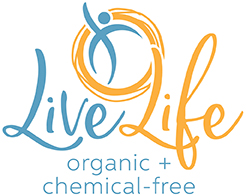
When you clean the bathroom, is it tougher to breathe? Like someone took the fresh air out of the room.
You don’t think much of it until your throat hurts or your eyes squint from the fumes.
“Hurry up and finish” you think to yourself, “I just gotta get it done and over with.”
Those weekly cleanings and residual chemicals may be adding up, causing health conditions such as chemical sensitivity, asthma and other health conditions.
How are cleaners causing chemical sensitivities and other health conditions?
What starts out as difficulty breathing may develop into asthma, chemical sensitivity, cancer, central nervous system damage, or other chronic illness.
The chemicals found in typical store-bought cleaners may be damaging cells. Here’s what happens when cells are damaged: they regenerate and create one of three types of cells – healthy, another damaged cell, or a cancer cell.
The more damaged cells that develop, the less your major organs can functioncorrectly.
The less your organs can function correctly, the less your body can operate “normally.”
This process snowballs.
What types of chemicals are found in cleaners?
Cleaning products are well known for being a mixture of chemicals that give off strong odors. Although, odorless chemicals can be just as harmful to health.
What’s in these cleaners?
- Fragrances. One fragrance could be made of over 100 chemicals.
- Dyes. Specifically, synthetic dyes are man-made. In other words, made of chemicals instead of natural materials.
- VOCs. A category of thousands of chemicals. Nearly every document that explains “VOCs” states common cleaners contain VOCs (volatile organic compounds).
- SVOCs. A subcategory of VOCs that off-gas and flake off for the entire life of the product and beyond. SVOCs stick around months to years after the product is out of the home. SVOC stands for semi-volatile organic compound.
- HAPs. Another category of chemicals, totaling over 180 chemical names, that are “known or suspected to cause cancer or other serious health effects, such as reproductive effects or birth defects, or adverse environmental effects.” according to the U.S. Environmental Protection Agency. HAP is short for Hazardous Air Pollutants.
Why are specific chemical names irrelevant?
The specific chemical names are irrelevant for consumers like you and I. Why?
Three reasons:
- Labels don’t include a full list of ingredients. In fact, many harmful ingredients are specifically not listed. U.S. labeling and “trade secret” laws allow companies to list general categories such as “dyes” or “fragrance” each of which can include hundreds of chemicals. Or, companies can choose to simply not list anything, stating that if they disclose the ingredients their secret recipe would be made public.
- Of the 100,000 chemicals registered with the U.S. EPA, thousands have been tested and found to be hazardous to health. Who has time to memorize and scan labels for thousands of chemicals?
- One chemical can have several names. So, you’d be checking for thousands of chemicals x (times) 2 or more names. Enough to make your head spin.
Summary
Cleaners commonly contain chemicals such as VOCs, SVOCs, dyes and fragrances made from chemicals that may be harmful to our health and causing damaged cells, health concerns and medical conditions. Checking labels for these chemicals is not a practical solution, since we consumers would need to look for thousands of chemicals, know their several names (one chemical can go by several different names), and U.S. laws that state manufacturers don’t have to list all ingredients on a label.
Next Article: What’s the key to nontoxic cleaning?
